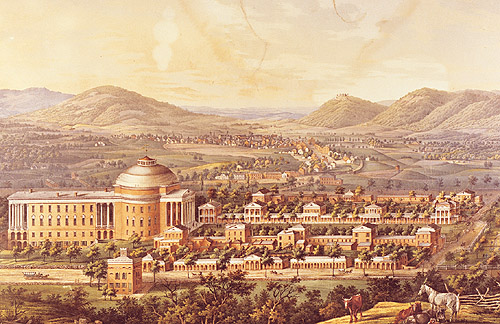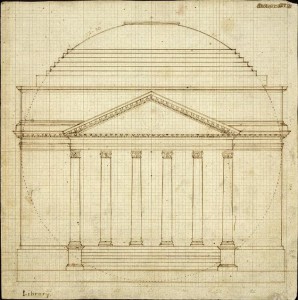
Designed by celebrated English architect, James Gibbs, between 1737-1749, the Radcliffe Camera, constructed to house the Science Library at Oxford University, became one of the first known libraries to use a dome. Photograph by Roman Kirillov, 2006.
Stanford White’s Gould Memorial Library, a majestic structure reminiscent of Ancient Rome, is considered a lost treasure today. Few know of its existence, but for a number of decades the library was considered the most impressive building in the Bronx. When designing the Gould Memorial Library, White envisioned a grand classical structure with a large stairway, columns, arched openings, decorative details and most significantly, a dome. The rotunda would become the defining feature of his library.

The British Museum Library, constructed 1854-1857 by Sydney Smirke, furthered interest in circular reading rooms. Today it houses a large collection of books related to art and history. Photograph by Biliff, 2006.
Beginning in the 19th century, architects in the United States began adopting the dome for their library designs. Thomas Jefferson’s Library at the University of Virginia became one of the first college libraries to implement a rotunda and served as a major influence on White. During the 1800s, the church was the most prominent building on campus, but Jefferson purposefully designed the library to be the most notable structure as a way to symbolically assert knowledge as the preeminent function of the university. The rotunda quickly became a symbol of higher education.

Lithograph of the University of Virginia by Casimir Bohn, 1856. Courtesy of the University of Virginia Library.
Thomas Jefferson placed his university, with its classical library, amidst the scenic Blue Ridge Mountains of Virginia. Stanford White hoped to channel the scenery in the Bronx in a similar fashion by building the library on the highest part of campus overlooking the Harlem River.

